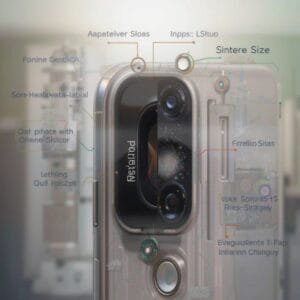Ultimate Guide to Smartphone Specifications: RAM, Processor, Battery, and Cameras Explained
Smartphone brands often market their devices with impressive numbers—like high RAM capacities, massive megapixel cameras, and huge battery sizes. But do these numbers alone guarantee superior performance? Not necessarily. This guide explains critical smartphone specifications in a clear, easy-to-understand manner, enabling you to make smarter buying decisions.
Understanding RAM: Speed and Multitasking
RAM, or Random Access Memory, is essential for multitasking and running applications smoothly. When you open an app or a game, relevant data temporarily loads into the RAM, providing rapid access compared to your phone’s main storage. However, the amount of RAM isn’t the only crucial factor—its generation matters as well.
LPDDR4, LPDDR5, LPDDR5X: Newer RAM generations consume less power and offer significantly faster performance. LPDDR5X, for instance, delivers better multitasking capability and overall device responsiveness than previous versions.
Storage Type Matters: Why UFS Storage?
Your smartphone’s internal storage isn’t just about capacity—it’s also about speed and efficiency. Traditional eMMC storage has largely been replaced by Universal Flash Storage (UFS).
UFS 2.1, 3.0, 3.1, and 4.0: Each generation provides faster data transfer speeds, directly affecting app loading times, system boot-up, and multitasking performance. Always prefer higher UFS storage versions for smoother overall device performance.
Processor: The Brain of Your Smartphone

Think of your processor as the smartphone’s brain, managing everything from app loading and gaming performance to camera quality and battery efficiency.
Popular processors include Qualcomm Snapdragon, Apple A-series chips, Samsung Exynos, and MediaTek Dimensity.
For intensive tasks such as gaming, video editing, and multitasking, Snapdragon and Apple A-series processors typically perform exceptionally well.
Battery Capacity vs. Battery Efficiency
A higher battery capacity (measured in milliamp-hours, mAh) might suggest longer battery life, but it isn’t the only determining factor.
Battery life is also influenced by processor efficiency, software optimization, and display technology.
Fast charging technologies (e.g., 30W, 65W) significantly improve convenience, providing rapid recharging capabilities that can be more important than sheer battery size alone.
Camera Megapixels: More Isn’t Always Better
A common misconception is that more megapixels mean better photos. While megapixels influence image resolution, they aren’t the sole determinants of image quality.
Sensor Size: Larger sensors capture more light, improving low-light photos significantly.
Aperture: Wider apertures (f/1.6, f/1.8) enhance low-light performance and portrait quality.
Optical Image Stabilization (OIS): Crucial for reducing blur in photos and videos, especially in low-light conditions.
Software Optimization: Image processing algorithms play a huge role in the final quality, affecting colors, sharpness, and overall accuracy.
Display Technologies Simplified
Your smartphone display type significantly impacts your viewing experience, battery life, and outdoor visibility.
LCD: Cost-effective but consumes more power, offers moderate contrast, and limited visibility outdoors.
OLED/AMOLED: Offers deeper blacks, better contrast, power efficiency, and vibrant colors.
Super AMOLED: Developed primarily by Samsung, delivers enhanced brightness, reduced glare, improved outdoor visibility, and integrates the touchscreen directly into the display.
P-OLED (Plastic OLED): Flexible, enabling curved screens; lighter but less durable.
IP Ratings: Water and Dust Resistance Explained
The IP rating system indicates your phone’s resistance to dust and water. It consists of two numbers:
First Digit (Dust Resistance): Rated from 0 (no protection) to 6 (full protection against dust).
Second Digit (Water Resistance): Rated from 0 (no protection) to 8 (full protection against submersion).
Phones with an IP68 rating offer the highest standard of dust and water resistance. However, frequent or prolonged exposure to water can degrade this protection over time, so consider it protection against accidental drops rather than a regular usage feature.
How to Choose the Right Smartphone
Instead of focusing on just one specification, such as RAM or megapixels, evaluate smartphones based on a balanced combination of these critical components. Consider your specific usage scenarios:
General Use: Moderate RAM (6-8GB), efficient processor, reliable battery.
Gaming & Heavy Usage: Higher RAM (8-12GB), latest processor, higher UFS storage version.
Photography Enthusiast: Focus on sensor quality, OIS, aperture, and software optimization, not just megapixels.
Final Thoughts
Numbers alone don’t tell the complete story. Understanding these specifications comprehensively ensures you select a smartphone perfectly tailored to your needs. Keep this guide handy for your next purchase, share it with your friends, and make smarter, informed decisions for the ultimate smartphone experience.








That is really interesting, You are an excessively skilled blogger.
I’ve joined your feed and look ahead to searching for
extra of your great post. Also, I have shared your web
site in my social networks